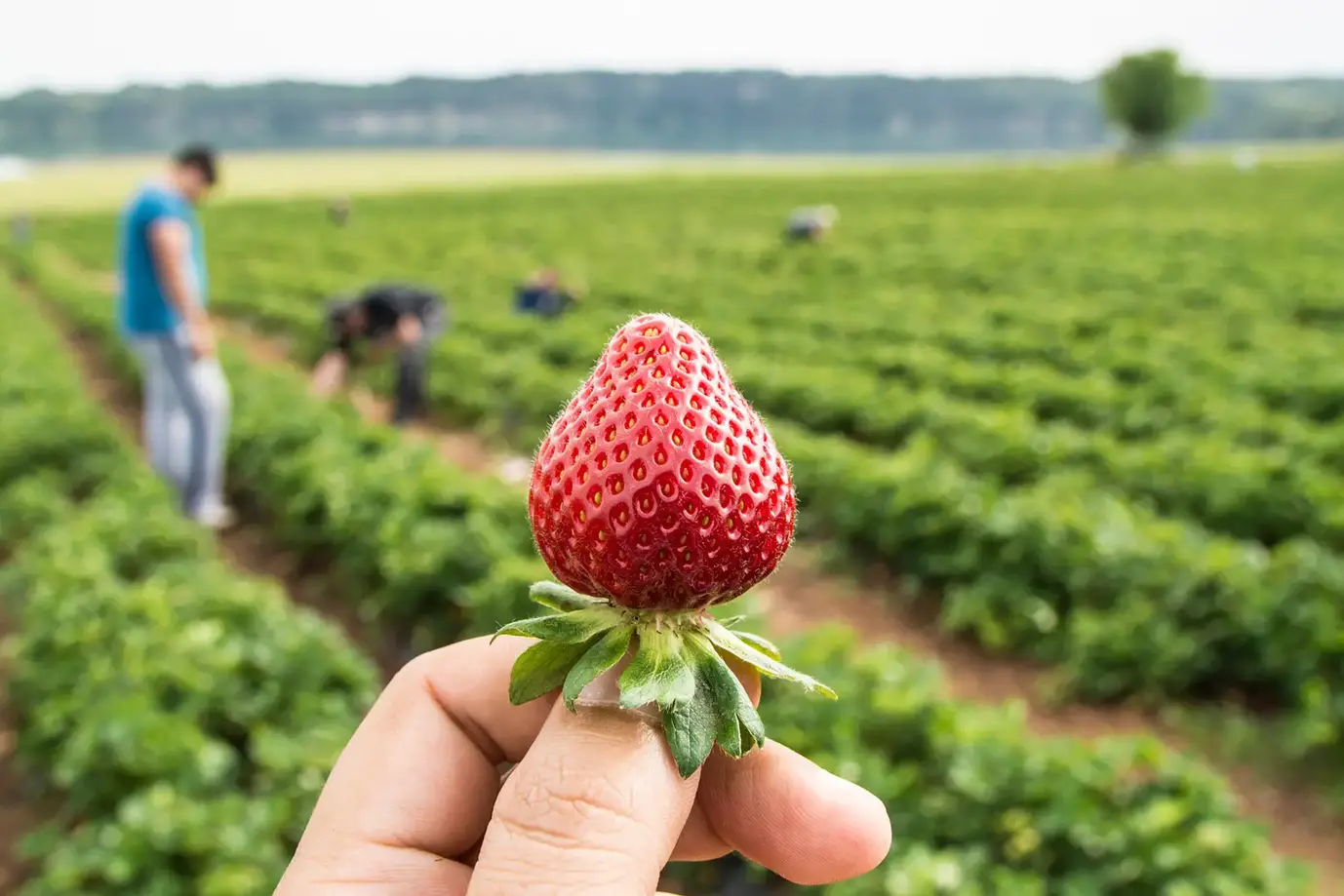
A recent study finds that plastic mulch, commonly used in strawberry farming in California, contributes significantly to plastic pollution in the soil. Despite its benefits, plastic fragments of mulch are difficult to remove completely and negatively affect soil health over time. Researchers are looking for solutions with manufacturers to address these environmental concerns.
Researchers have identified an alarming source of plastic pollution in California strawberry farms. Plastic mulch, a common tool in promoting strawberry growth, has been found to dump significant amounts of plastic fragments into the ground. This phenomenon negatively affects the qualities of the soil and calls into question the long-term sustainability of the use of plastic mulch. These findings are likely to have global implications for the use of plastics in agricultural production.
Presenting their work at the Goldschmidt geochemistry conference in Lyon, postdoctoral researcher Dr. Ekta Tiflix (from the Sistla group at California Polytechnic State University) said “What we’re seeing is a huge amount of plastic macroplastic material – particles larger than 5mm across – being pumped where mulch is used to increase strawberry production. These can stay on the ground for decades or longer.”
Plastics, such as polyethylene, are increasingly used in agriculture, for example in polytunnels. Mulch plastic films are widely used in agriculture, where they offer a variety of benefits. They are inserted around the base of the plant, which can help control weeds and pathogens, reduce water evaporation and prevent soil from splashing on the fruit (which is especially important for strawberries).

Researchers have found that plastic mulch, widely used to support the growth of strawberries in California, sheds significant amounts of plastic fragments into the ground. These fragments negatively affect soil quality and challenge the sustainability of plastic use in agriculture. The problem is exacerbated by the fact that even painstaking removal of plastic mulch leaves fragments attached to the ground, resulting in the accumulation of plastic over time.
The Mulch is applied in rows and then removed after the seasonal crop production has ended. However, even careful Land Management by farmers does not ensure that all plastic is removed because the fragments are left behind and stick to the soil during removal. After decades of application and annual removal of plastic mulch, the researchers observed the accumulation of plastic fragments within agricultural lands, even in really well-managed fields. The students were looking for macroplasty, which are pieces of plastic more than 5 mm in diameter.
Ekta Tiflix continued ” We conducted a systematic study of Strawberry Fields after the seasonal removal of these plastic films. We found that the distribution was fairly uniform. On lowland surfaces alone, we found up to 213,500 macroplastic particles per hectare. This does not include underground particles, which we did not Survey. In addition, we are currently analyzing the same soil samples for microplastics, which are smaller particles, less than 5mm across; these have not yet been included in our findings.”
Note: one hectare is 10,000 square meters. By comparison, an average professional football field is about 7,100 square feet and an American football field is 5,350 square feet.
Most particles are polyethylene (identified using Fourier Transform Infrared Spectroscopy). In preliminary findings, the researchers found that as levels of macroplastic pollution increased, soil moisture content, microbial respiration, and nitrogen available to plants decreased.
Dr. Tisibari added ” plastic mulch provides benefits, but at the expense of long-term soil quality. It is difficult and expensive to remove these particles from the ground, so once they are there they can stay there indefinitely.”
We tend to think that strawberries are just things to enjoy, but this shows that even something as delicious as fresh strawberries can come at a cost to the environment. We are working with manufacturers to see if we can mitigate these costs.”
There are alternatives to the use of polyethylene mulches, such as biodegradable plastic mulches, or natural mulches such as straw, but these choices come at a l economic cost. However, the use of plastics in agriculture is also increasingly regulated, see for example the European Union Information in https://environment.ec.europa.eu/system/files/2021-09/Agricultural%20Plastics%20Final%20Report.pdf
Commenting, Professor Sean Schaeffer (Department of Biosystems and Earth Sciences Engineering, University of Tennessee, USA) said::
“Plastics, and plastic mulches in particular, are vital to maintain agricultural production. They are used for various purposes including retaining soil moisture, heating/cooling the soil, as well as controlling weeds or pests. The use of agricultural plastics is increasing worldwide, with California being the largest user of agricultural plastics in the US. Research on the fate and transport of plastics in land and water systems is relatively recent, so studies like this one are vital to increase our understanding of the scope of the plastics problem. We currently know relatively little about the distribution, size and types of plastics on soils in larger states, both in land area and in agricultural production.”
This is an independent Comment, Professor Schaeffer was not involved in this work.
This work is ongoing and has not yet been peer reviewed. Researchers are currently assessing the level of microplastic pollution (particles smaller than 5mm) left by plastic mulches. This study provides baseline data for understanding the extent of plastic pollution in the U.S. agricultural system and could help improve land management practices by assessing the biogeochemical consequences of plastic collection on agricultural lands.
#Bitter #Harvest #Dirty #Secret #Strawberry #Fields